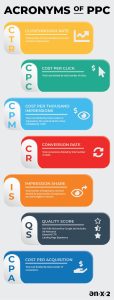Google’s algorithm changes have a long history of seriously affecting corporations using SEO to bolster their brand, often without much weight behind the content they are publishing.
Content farms were the first to take a hit, with companies including Demand Media and Ask.com experiencing significant traffic declines due to poor quality content. Google’s 2011 algorithmic change –– known as Panda –– forced companies like the aforementioned to improve their content quality and writing guidelines, leading us today to organizations like NewsCred and Contently, which pay their professional writers extremely well for high-quality content used on sites including Forbes, American Express Open Forum and Spotify.
Poor link quality was Google’s next target and the company’s 2012 Penguin algorithm update began to account for sites linking to poor quality content. In other words, if you’re spreading irrelevant or incorrect information phished from poor quality sites, you’ll be penalized.
So, what’s in it for Google in updating algorithms to punish companies misleading readers? Customer trust, for one.
“Google is just protecting the searcher,” said Tim Kilroy, CEO of search marketing technology vendor AdChemix, in an interview with Internet Retailer.
Though internet users often forget, Google, too, is competing for user trust and industry proficiency when it comes to online search. It is the company’s backbone. It is its core product offering. It is why names like Bing and DuckDuckGo are known, though often not used. Google is beating their competition by staying customer-focused, identifying what a reader is mostly likely looking for when they search and rewarding companies who are trying to supply the best information, rather than game the system.
Mobile, Local Wins Google’s Favor
On April 21, Google is issuing another algorithm change in favor of the consumer, rewarding companies who are mobile-friendly first. Unfortunately, while previous algorithm updates have most heavily affected large companies, this new change will seriously affect smaller online publications and retailers who have yet to make mobile a priority.
“Google has been testing mobile-friendly notifications and tools over the past few months, but hadn’t yet said that mobile-friendliness was actually a ranking factor,” says Angie Pascale, marketing manager at Indaba Group. “On April 21, it will be. At that time, if your site doesn’t pass Google’s mobile-friendliness test, it may lose visibility on mobile search results. This is bad news on its own, certainly, but because Google doesn’t have separate mobile and desktop indexes, there’s the possibility that sites will also be penalized in desktop results. Google has indicated that they will be creating separate indexes in the future, but that’s not currently the case.
According to Google, this change is indeed in the consumers’ favor.
“Users will find it easier to get relevant, high-quality search results that are optimized for their devices,” Google writes on its official Webmaster blog.
A page qualifies for a mobile-friendly label if and when the following criteria is met, as determined by Google’s web crawler:
- Avoids software that is not common on mobile devices, like Flash.
- Uses text that is readable without zooming.
- Sizes content to the screen so consumers do not have to scroll horizontally or zoom.
- Places links far enough apart so that the correct one can be easily tapped.
This new algorithm makes the need for a responsive site design absolutely necessary, rather than a nice-to-have. Most ecommerce platforms offer responsive templates that you can implement immediately for your site to avoid losing any traffic once the change takes place.
“First and foremost, make sure every page of your site is mobile friendly through either responsive design or a separate mobile version,” says Pascale. “Google determines mobile friendliness on a page-by-page basis, so it’s imperative that the entire site passes, not just a few main pages. Having a responsive design site won’t further aid in ranking, but it does create a seamless experience across all devices so I recommend it for all sites.”
Even without this change, mobile-first shopping experiences were becoming more and more influential for retailers’ bottom lines. Data from Ericsson suggests 90% of the global population over 6 years of age will own a mobile phone by 2020, heavily shifting the shopping mindset. In addition, data from PricewaterhouseCoopers found that at least 15% of all retail conversions in the U.S. stem first from mobile research. For some industries, that number is up to 36% of all retail conversions.
Indeed, consumers may not yet be buying in large numbers from a mobile device, but they are using them to research products before they make a purchase. This alone is enough to prompt retailers toward a responsive design. And now, Google will punish those who have yet to make the customer-centric switch.
“In his speech at Search Marketing Expo, [Gary] Ilyes, webmaster trends analyst at Google, wouldn’t say if sites would receive a penalty for not being mobile ready by April 21,” notes Pascale. “But he did stress that it is ‘a very important day.’ That’s as close to a confirmation as you’re going to get from Google!”
So, do the right thing and make sure your site is mobile friendly by that date. Use Google’s new Mobile Usability Reports and Testing Tool now to get started.
(264)




